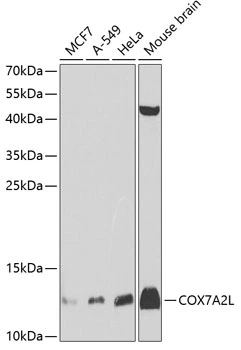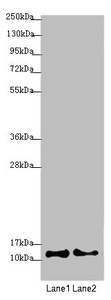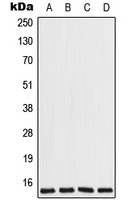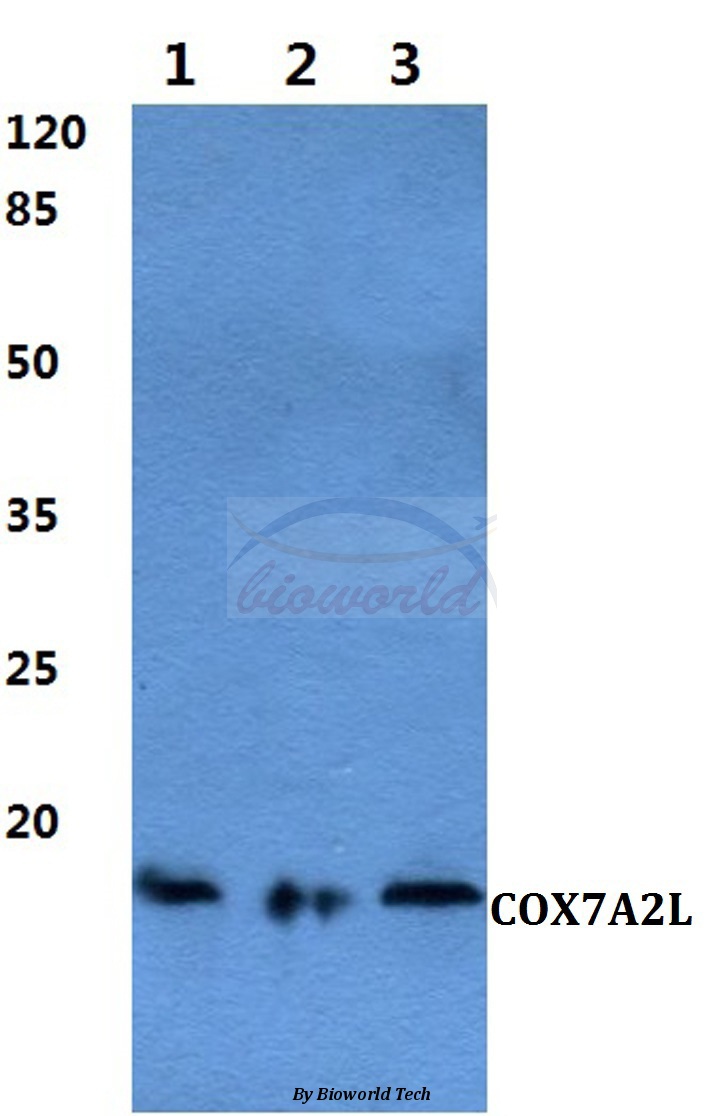
WB analysis of various sample lysates using GTX32535 COX7A2L antibody. Dilution : 1:1000 Loading : 25microg per lane
COX7A2L antibody
GTX32535
Overview
- SupplierGeneTex
- Product NameCOX7A2L antibody
- Delivery Days Customer9
- Application Supplier NoteWB: 1:500 - 1:2000. *Optimal dilutions/concentrations should be determined by the researcher.Not tested in other applications.
- ApplicationsWestern Blot
- CertificationResearch Use Only
- ClonalityPolyclonal
- ConjugateUnconjugated
- Gene ID9167
- Target nameCOX7A2L
- Target descriptioncytochrome c oxidase subunit 7A2 like
- Target synonymsCOX7AR; COX7a-related protein; COX7RP; cytochrome c oxidase subunit 7A-related protein, mitochondrial; cytochrome c oxidase subunit VIIa polypeptide 2 like; cytochrome c oxidase subunit VIIa-related protein; cytochrome c oxidase subunit VII-related protein; EB1; estrogen receptor binding CpG island; SCAF1; SCAFI; SIG81
- HostRabbit
- IsotypeIgG
- Protein IDO14548
- Protein NameCytochrome c oxidase subunit 7A-related protein, mitochondrial
- Scientific DescriptionCytochrome c oxidase (COX), the terminal component of the mitochondrial respiratory chain, catalyzes the electron transfer from reduced cytochrome c to oxygen. This component is a heteromeric complex consisting of 3 catalytic subunits encoded by mitochondrial genes and multiple structural subunits encoded by nuclear genes. The mitochondrially-encoded subunits function in electron transfer, and the nuclear-encoded subunits may function in the regulation and assembly of the complex. This nuclear gene encodes a protein similar to polypeptides 1 and 2 of subunit VIIa in the C-terminal region, and also highly similar to the mouse Sig81 protein sequence. This gene is expressed in all tissues, and upregulated in a breast cancer cell line after estrogen treatment. It is possible that this gene represents a regulatory subunit of COX and mediates the higher level of energy production in target cells by estrogen. Several transcript variants, some protein-coding and others non-protein coding, have been found for this gene. [provided by RefSeq, Jan 2016]
- Storage Instruction-20°C or -80°C,2°C to 8°C
- UNSPSC12352203





